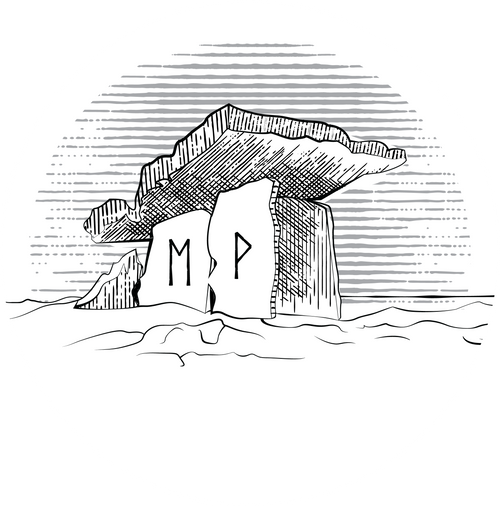What is the Fantasy of Dune? How To Make Your D&D Game More Dune: Sandworms
Dune is gargantuan, not just in page-length (or run time), but in conceptual scope. So Dune has many many “fantasies” that it evokes, but one we’re going to focus on for this is… The Fantasy of Sandworms.
Spoilers for Dune
Setting Shapers
The Sandworms, as the central characters become more familiar with them, develop conceptually in the novel. They begin as mysterious monsters, known only for the threat they pose. This threat is so immense, that the technology and the societies of Arrakis are constructed around these monsters. Cities behind walls and harvesting machines ready to evacuate when a worm is nearby, the sandworms shape both the natural and artificial landscape.
However, we learn more about them as we learn more about the Fremen and their relationship to the worms. They are known as the Makers, or Shai-Hulud, meaning Grandfather of the Desert. It becomes clear that they have an even greater ecological impact on Dune than we first believe. Not only do they force civilisation to cower behind walls, but they produce the resource that the civilisation is there to harvest.
Their significance to the environment is so great, that they are worshipped by the Fremen. Additionally, this symbiotic relationship between the human civilisations and the worms runs deepest with the Fremen, who use the worms for various purposes, including as mounts.
The fantasy of the sandworms is more than just a large dangerous creature, it is far more sophisticated than that. The core fantasy of the sandworm is that they are setting-shapers, literally Makers of the environment.
So, if you wanted to recreate the fantasy of the sandworms in a single way, it would be to create a creature that defines the ecological (and therefore, societal) conditions of the setting itself.
The Core Aspects of Sandworms:
- They ecologically shape the setting - and therefore, civilisations are built around them
- Society lives in a necessary symbiosis with these creatures
- They are a permanent environmental threat
We could simply port this lore in the existing Purple Worms of D&D and that would suffice, however I think that we don’t need to be bound to underground worms in order to capture that same feeling. The fantasy of the sandworms is more abstract than that.
Firstly, we can imagine any creature, large and numerous enough, can shape the environment around it. The obvious choice for a game called Dungeons and Dragons, would be Dragons. You can imagine entire landscapes shaped by the presence of Dragons, it’s a powerful and evocative fantasy. But what other creatures could we imagine? Aboleths, Giants, Salamanders, NIghtwalkers, Froghemoths?!
We'll call these creatures "SETTING SHAPERS"
Just go to a list of D&D monsters, and filter by Size = Huge or Gargantuan. What sparks your imagination?
Then you need to think about the societal consequences of the setting shaper - the varying levels of adaptation. If we really want that Dune sociology, we can split humanoid societies into two broad groups based on their relationship to the setting shapers; a majority that adapt to survive against the creatures, and a minority that adapt to exploit them. While the noble houses of Arrakis sit behind walls struggling to manage worm attacks in the desert, the Fremen use the worms as a tool, riding them, using their byproducts for rituals, and even raising them. One group might have made their societies resilient to the creatures. The other group however, has made themselves antifragile to the threat of the creatures; rather than resisting the threat, they embrace and use it.
Essentially, recreating the fantasy of the Shai-Hulud requires more than monster design - it requires designing your setting. And I think, once you have stepped outside the “underground worm” skin on this more abstract idea of setting shaping monsters you can go down some truly unique and imaginative paths. The best thing about having such creatures intertwined with the environmental and living conditions of a setting, is that it requires the players to engage and pay attention. The setting shapers are more than just interesting lore, they affect gameplay at the table. When they influence the lives of the player characters, change the decisions that the players make, then your setting lore becomes integrated into the game!
Because what are the setting shapers if not a problem waiting to be solved by a group of adventurers?
How does the ever-presence of the setting shapers look in practice?
- Random Encounter tables whenever the player characters leave a safe area
- NPCs and towns disappearing after creature attacks
- Quests and adventures that only exist because of the setting shapers
- An ecology of monsters that live off the byproducts of the setting shapers?
In a world where a gargantuan creature could attack at any time, just delivering a message from one town to another is a task for an adventurer.
In short, the setting shapers are a dramatic device to raise the stakes. If Arrakis didn’t have the sandworms then there would be nothing stopping the noble houses civilising the entire planet. Why haven’t the humanoid kingdoms civilised the wilderness in your setting? Is it because the presence of enormous monsters is stopping them? What else do these giant monsters mean for your setting?
I hope this ramble makes sense to you! This is really a demonstration of how to find what you like about other people’s writing and creation and put it into your own game. I love the sandworms in Dune, I love how the characters can’t do anything without considering the sandworms and the dramatic tension that creates. Adventurers should be worried about traversing the wilderness and entering dungeons, and I think giant setting shaping creatures are a great way to make you players think more deeply about their choices.
